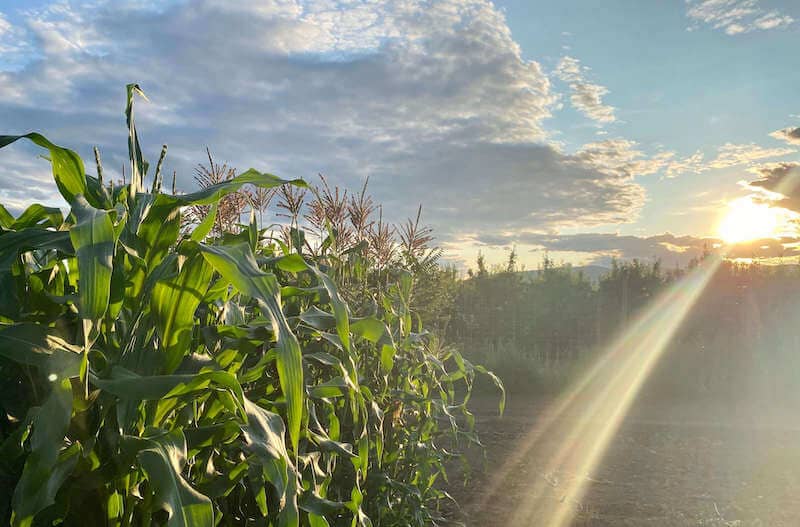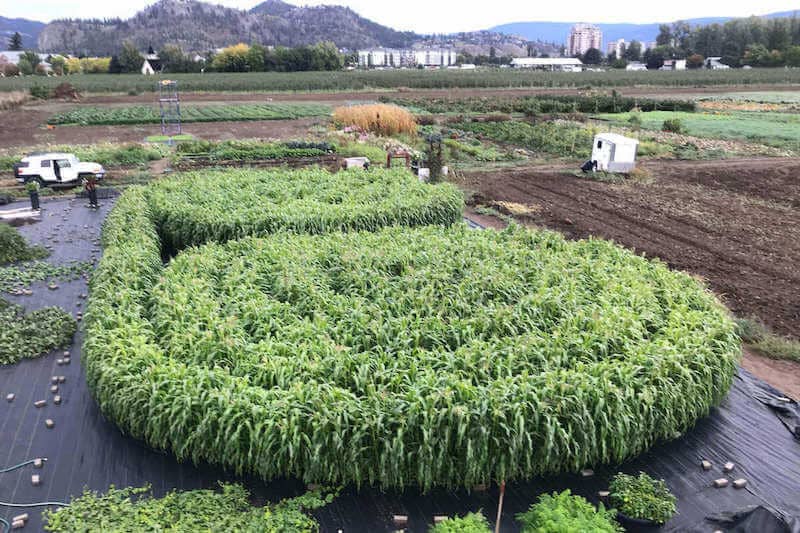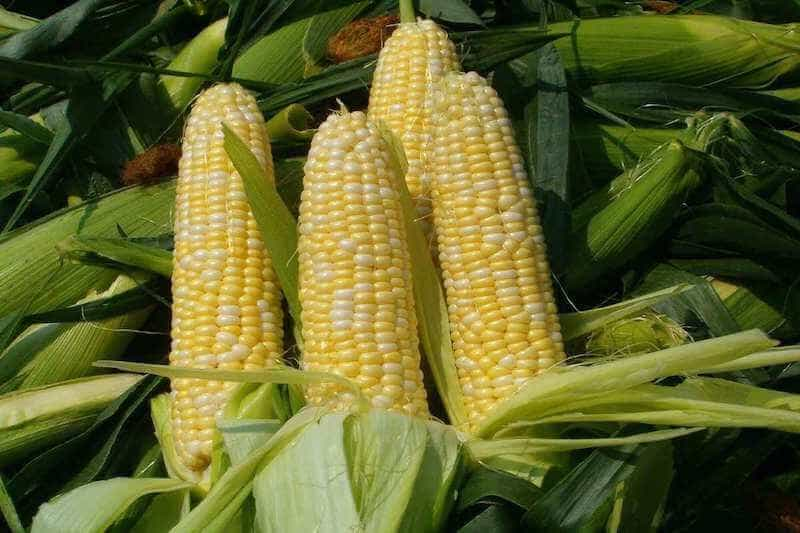
Growing corn in rows is a common method used in modern agriculture. This method involves planting corn seeds in straight rows, which allows for easier management of the crop with machinery such as tractors and combines. The rows are typically spaced between 30-40 inches apart, and the seeds are planted at a depth of around 1-2 inches.
After planting, cultivation of the corn involves several tasks such as fertilization, weed control, and pest management. Fertilization is important to provide the crop with the necessary nutrients for healthy growth. This is typically done using synthetic fertilizers or through the application of organic materials such as manure or compost in a backyard garden.
Weed Control Weed Control is also critical to maintain healthy corn growth. Maintaining healthy corn growth also requires effective weed control. This can be accomplished through a range of strategies, including weeding by hand or the spraying of herbicides. In environments prone to insect infestations, implementing pest management strategies may be needed to shield the crop from harm. These strategies may encompass the use of chemical pesticides, biological control techniques, or a blend of both, although it's important to note that these methods may negatively impact the environment and may be particuarily harmful to pollinating bees.
In modern agriculture, corn cultivation is often mechanized, which allows for greater efficiency and productivity. Machinery such as tractors and planters are used for planting and initial soil preparation, while combines are used for harvesting the crop. Modern technologies such as GPS and precision agriculture also allow farmers to optimize their production and reduce waste.
Mechanized agriculture has significantly increased the scale of corn production, allowing farmers to produce more types of corn on larger farms with fewer labor requirements. However, machine farming also poses environmental challenges such as soil erosion, pollution, and loss of biodiversity. Therefore, sustainable agriculture practices that minimize environmental impact are increasingly important for growing corn.

A new corn cultivation technique has been developed that improves crop quality, production, and time to harvest. For open field short season production, a double row of corn is grown in a large acre spiral, irrigated from the center by a mast mounted water gun. Half-acre double spirals suit long season, small footprint locations in urban centers.
Circular planting patterns, sometimes referred to as "corn circles" or "crop circles," are used in precision agriculture as a way to maximize crop yields and reduce resource use.
NNo-till agriculture is a form of sustainable farming that involves growing corn without disturbing the soil through tillage. Instead of plowing and tilling the soil, no-till farming relies on methods such as direct seeding and the use of cover crops or a ground cover to maintain soil health and fertility.
There are several advantages to no-till farming:
No-till farming is a sustainable and effective approach to agriculture that offers a range of benefits for both farmers and the environment. By preserving soil health, reducing erosion and nutrient loss, and improving crop yields, no-till farming can help to ensure a more sustainable and resilient food future.

Crop Circle corn ground covers are essential for weed prevention. Once the land area is tilled, fertilized, and leveled, the ground cover is rolled out over the soil and pinned in place to prevent removal from wind blow. A spiraled ribbon is cut from the ground cover exposing a spiral of soil 6 inches wide. The soil is then seeded the length of the ribbon with approximately 15,000 seeds, which will produce about 40,000 cobs from a Crop Circle Corn Acre.
For a double spiral, the ground cover is laid out over a rectangular half acre. Two spiraled ribbons are cut from the ground cover exposing a co-joined double spiral of soil 6 inches wide. The soil is then seeded the length of the ribbon sowing approximately 6,000 seeds, which will produce about 15,000 cobs from a Crop Circle Corn Half Acre.

Spiraling corn creates a vertical plant wall to support companion planting. Planting pole beans, a synergistic plant with corn, will not only add to the strength of the spiral corn wall but add revenue as well. Planting a bean seed with every second corn seed will grow a bumper crop of pole beans. A Fibonacci spiral may be the best configuration for growing corn because due to its gaining of space between loops from the center. More space between loops allows for more sunlight to penetrate the crop circle. With even more space along the outer edges of the spiral, vining plants like squash can be planted creating a “three sisters” method of growing vegetables developed by indigenous tribes of North and Central America.
The Three Sisters method is an agricultural technique used by many Indigenous peoples in the Americas. It involves planting corn, beans, and squash together in a symbiotic relationship that benefits all three crops.
Indigenous people began with preparing a mound of soil, usually about a foot high, in a sunny area. The mounds were spaced several feet apart to allow room for squash plants to grow. In the center of the mound, corn was planted. The corn served as a natural trellis for the beans, which were planted around the base of the corn. As the corn grew, the beans climbed up the corn stalks, providing support for the corn and fixing nitrogen in the soil. The beans also benefited from the shade provided by the corn leaves during the hot summer months.
The third sister, squash, was planted on the ground surrounding the mound. The broad leaves of the squash plants helped shade the soil and retain moisture, which helped to prevent the other plants from drying out. The prickly vines of the squash also deterred animals from eating three sister crops.
Together, the three sisters created a balanced ecosystem that supports each other's growth and health. The corn provided a support structure for the beans, while the beans enriched the soil with nitrogen. The squash provided shade and moisture retention while also repelling pests. The Three Sisters method is a sustainable and efficient way of farming that has been used for centuries, and it remains an important part of many Indigenous cultures today.
Ready to transform your land into a high-yield, sustainable farm? Let Crop Circle Farms design and build a custom, low-impact, and water-efficient farm tailored to your needs. Double your income and cut your costs in half! Contact Us
Help us expand our mission to revolutionize agriculture globally. We are seeking partners to implement Crop Circle Farms to feed people in need. Together, we can build scalable food production systems that save water, reduce costs, and feed thousands of people. Contact Growing To Give